In the interests of transparency, if you don’t believe that an owner’s perspective of a Honda Integra Type-R can be in any way impartial, click away to another page now. However, if you feel that the view of someone who has tested and reviewed thousands of cars during a career spanning 32 years (I haven’t been found out yet) then stick around.
Can it really be that long ago that I managed to talk my way into a summer job, working at busy weekly car rag, Auto Express? Sure can. Christmas 1998, in particular, sticks in my mind because I managed to broker an extension to an Integra Type-R that was in for review, and for the next two weeks over the holiday period it was mine, all mine, and I redlined that seemingly unburstable B18C engine throughout Sussex, Kent, Essex and Suffolk.

Even now, 23 years on, I can still feel that car fizzing around in the dim, distant depths of my memory.
Few cars have left such a lasting impression. Which is partly why I bought one. There are other reasons: It’s a Honda, so shouldn’t go wobbly on me. Parts and servicing are no more costly than Fiesta territory. And they’re still comparatively affordable – by which I mean have you seen how much Peugeot 205 GTIs have been selling for?
Don’t take my word for it. The DC2 generation of Integra Type-R has quite the reputation. Writing in the September, 2006 edition of evo magazine, Richard Meaden perfectly expressed why you’d put your hard-earned money into an Integra.
‘It’s a car as sweet and all-consuming as any I’ve experienced at any price,’ wrote Meaden, ‘and as pure and focused in its own way as any Porsche RS. Forget the accolade of greatest front-wheel-drive car. The Integra Type-R ranks as one of the truly great drivers’ cars of any kind.’
Honda never deigned to bring later generations of the Integra Type-R to drivers in the UK. Instead, its effort was put into marketing the British-built Civic, and therefore having a halo-type car that would help sell Civics was of more importance than a limited import run (just 500 Integra Type-Rs were sold by Honda UK) of a highly specialised car.
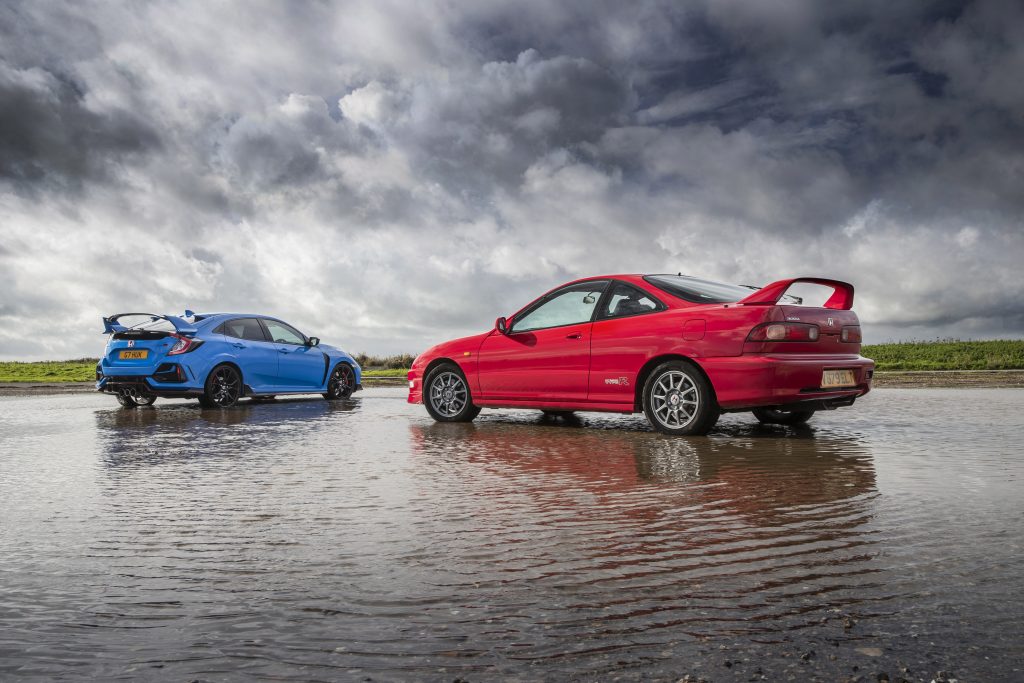
The first UK market Civic Type-R was the based on the EP3. You know the one – the ‘breadvan’. The latest and outgoing model is the FK8. Along the way, with the previous FK2 generation, Honda engineers succumbed to the inevitable and turbocharged the VTEC engine.
In 1998, a new Integra Type-R cost £19,500. As the most recent Civic Type-R reached the end of production, it was £30,805, rising to £39,995 for the very last 20 examples of the Limited Edition farewell model.
Much has changed, then. But all we really care about is how the spirit of Type-R manifests itself in cars that are, at the time of driving them, separated by 22 years of evolution. Let’s find out.
Honda Integra Type-R
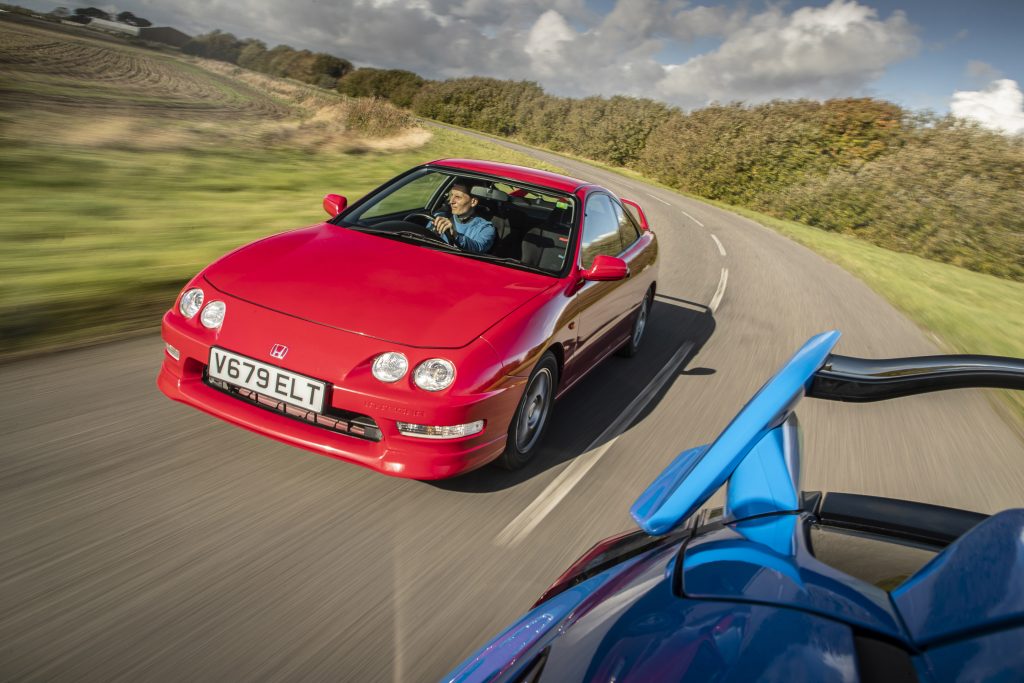
Truth be told, I broke every rule of browsing and buying a used car, especially a classic. Drive many, goes the saying, and get a feel for the good, the bad and the downright ugly. I spotted the Integra for sale online, dropped in to see it on the way back from an airport, and slapped down a deposit after a test drive. It was, and has gone on to prove to be, faultless.
An interesting question about Honda’s Type-R performance brand is whether it was planned or happened almost by accident? Rumour has it, Honda conceived Type-R after being stung by some reviews of the 1990 NSX. The NSX was Honda’s attempt to rethink the sports car into something that didn’t make boorish demands of its driver in the way a Ferrari 348 or Porsche 911 might. However, some quarters of the media found it to be almost too polished – like rebuilding a house at the expense of valued original features.
Honda’s response is reputed to have been to instruct Mugen, the tuning house and F1 engine builder, to come up with an NSX variant that would answer those critics. Mugen, remember, was owned by Hirotoshi Honda, son of company founder Soichiro Honda, and had desires of its own to create a more focused NSX, revealing a concept for such a car in January 1992. It wasn’t until the end of that year that the NSX Type-R was shown, and the engineering tricks deployed by the two to reduce weight, add power and bring laser-focus to the roadholding were remarkably similar…
By the time the NSX Type-R came off sale in Japan, in 1995, the Integra Type-R was ready for “mina-san” (the everyman) belatedly making its way to the UK in 1998, as a limited batch of 500 examples. It was more obtainable than the NSX Type-R, but no less focused in the way it went about giving the driver less of what they didn’t need and more of what they wanted.
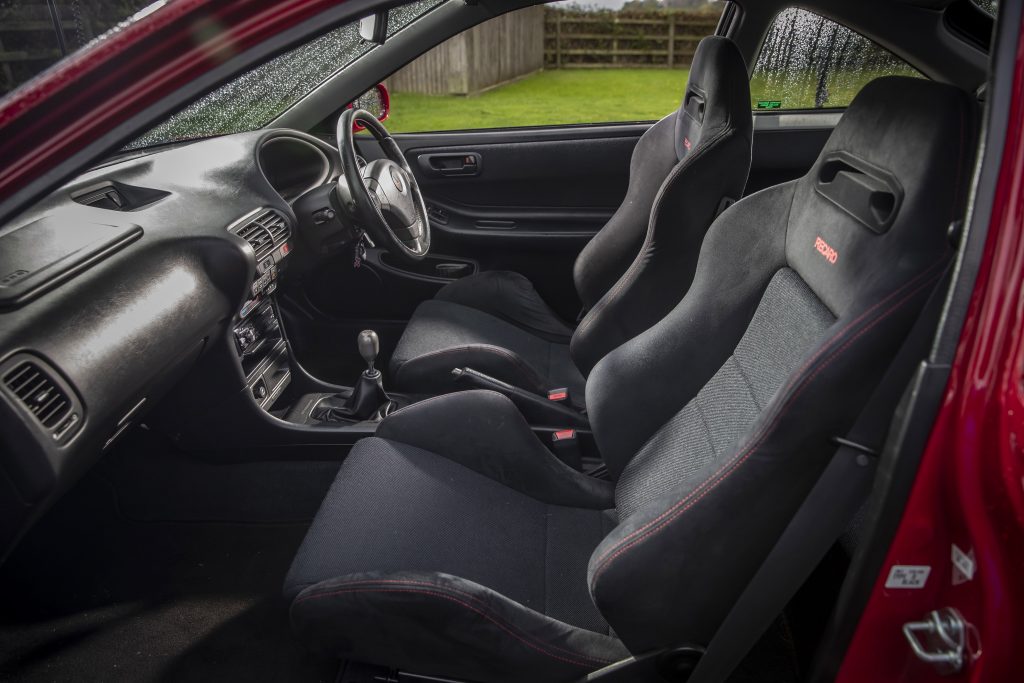
To that end, it was obvious to ditch the rear-wash wiper and air conditioning (although it was available as an option) and add lighter wheels, less obvious to delete the sunroof, remove all sound-proofing material and fit thinner windscreen glass.
Then there was the shell. With their handling goals in mind, at the Suzuka factory Honda engineers beefed up the body structure. First they applied thicker pressings and extra spot welds to key parts of the body structure. Next, they added bracing, such as a strut brace for the front suspension turrets and bracing bars across both the rear cross member and the ends of the rear chassis rails. Get under one of these things and before turning so much as a wheel you’ll appreciate the lengths Honda went to.
The 1.8-litre, four-cylinder VTEC engine introduced new pistons with anti-friction coating, a stiffer, balanced crankshaft, featherweight con rods, thinner stems for the valves, hand-polished intake and exhaust ports, uprated intake and exhaust manifolds and more besides. The end result was an engine boasting more power per litre – 187bhp from 1.8 litres – than any other naturally-aspirated engine going, and the ability to rev to 8900rpm before the limiter intervened.
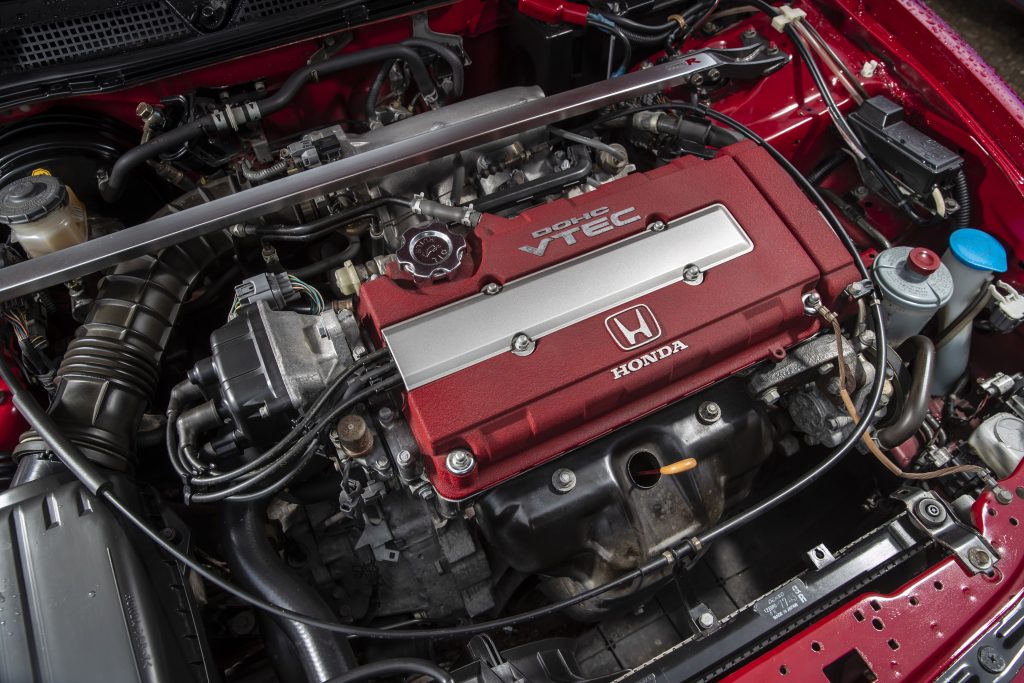
This was heady stuff in the ’90s, and justified comparisons in sales literature with piston speeds of the Formula One and Indycar engines Honda had been making a few years earlier.
There were three other vital changes that helped the Integra become something of a legend in its own lifetime. The first was the close-ratio, five-speed manual gearbox. By close-ratio, think 4000rpm at 70mph in fifth. The other was inclusion of a helical limited-slip differential, to help calm that inside front wheel when the VTEC kicked in (Yo!). And one important but often overlooked addition was the fitment of Bridgestone Potenza RE010 tyres to the 15-inch alloy wheels, an aggressive road tyre that was fit for track work.
In the fanatical pursuit of shedding weight, it would be nice to imagine Honda even went so far as to use transfers in place of badging for the Integra Type-R logos on the boot and ahead of the back wheels, and didn’t just figure it would be cheaper, while the front bumped was debossed with Integra. The final outcome was a kerbweight of 1125kg, not bad for a four-seat coupé with a decent-sized boot.
From the driver’s seat of the Integra, you’ll spy certain Type-R signatures. Some you’ll find in both cars, such as a cool metallic gearknob (titanium in the Integra, aluminium in the Civic), sports seats (the Integra has some of the finest Recaros ever made), a chubby-rimmed steering wheel and an outstanding driving position. In the Integra, the dash is low, the seats heavily bolstered, the Momo wheel is fat in your hands, yet the general vibe is that Great Aunt Millicent’s nephew has been let loose on her nice, red Honda runaround. Without its embellishments the Integra would be painfully ordinary. But this is a car that serves up more than the sum of its constituent parts.
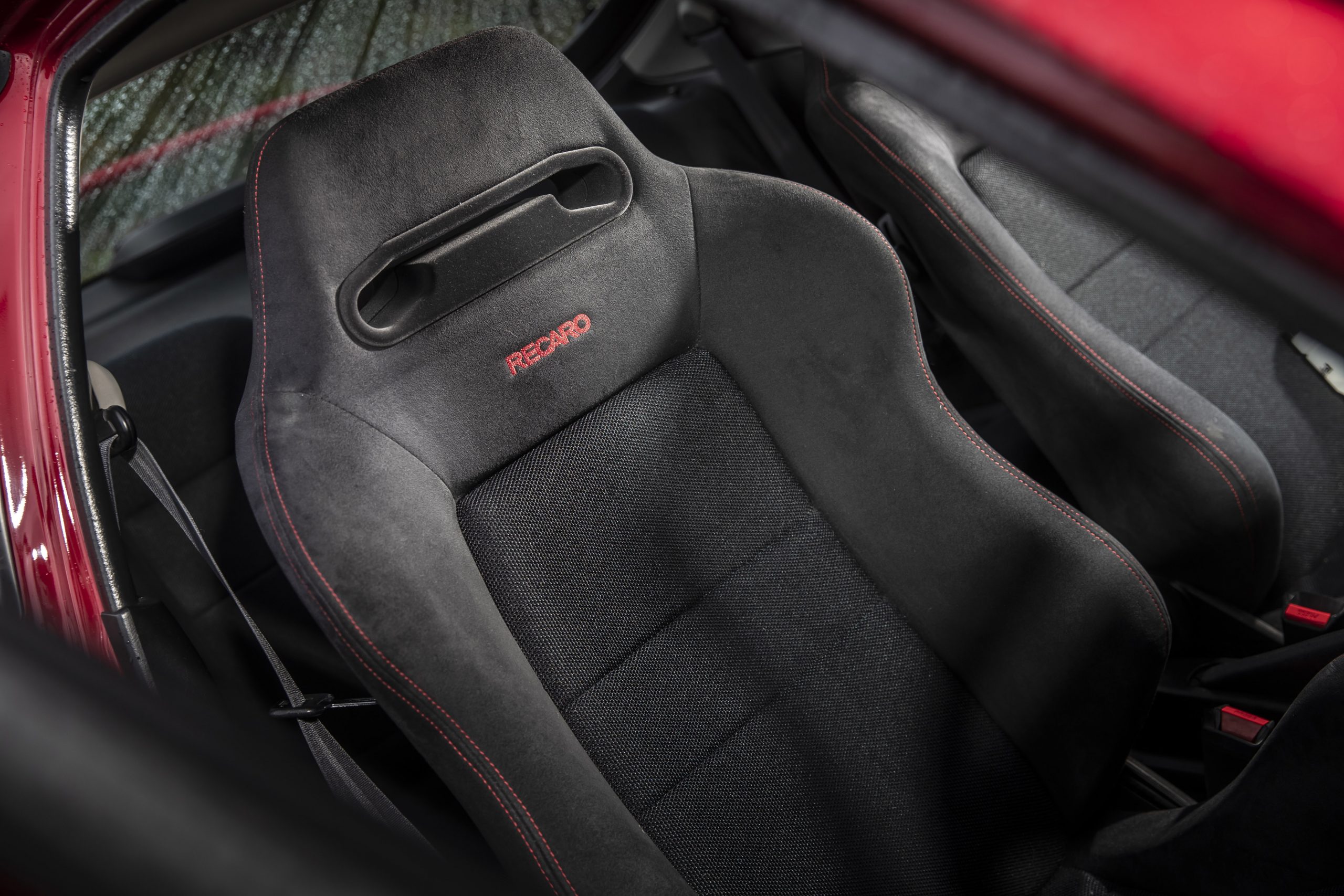
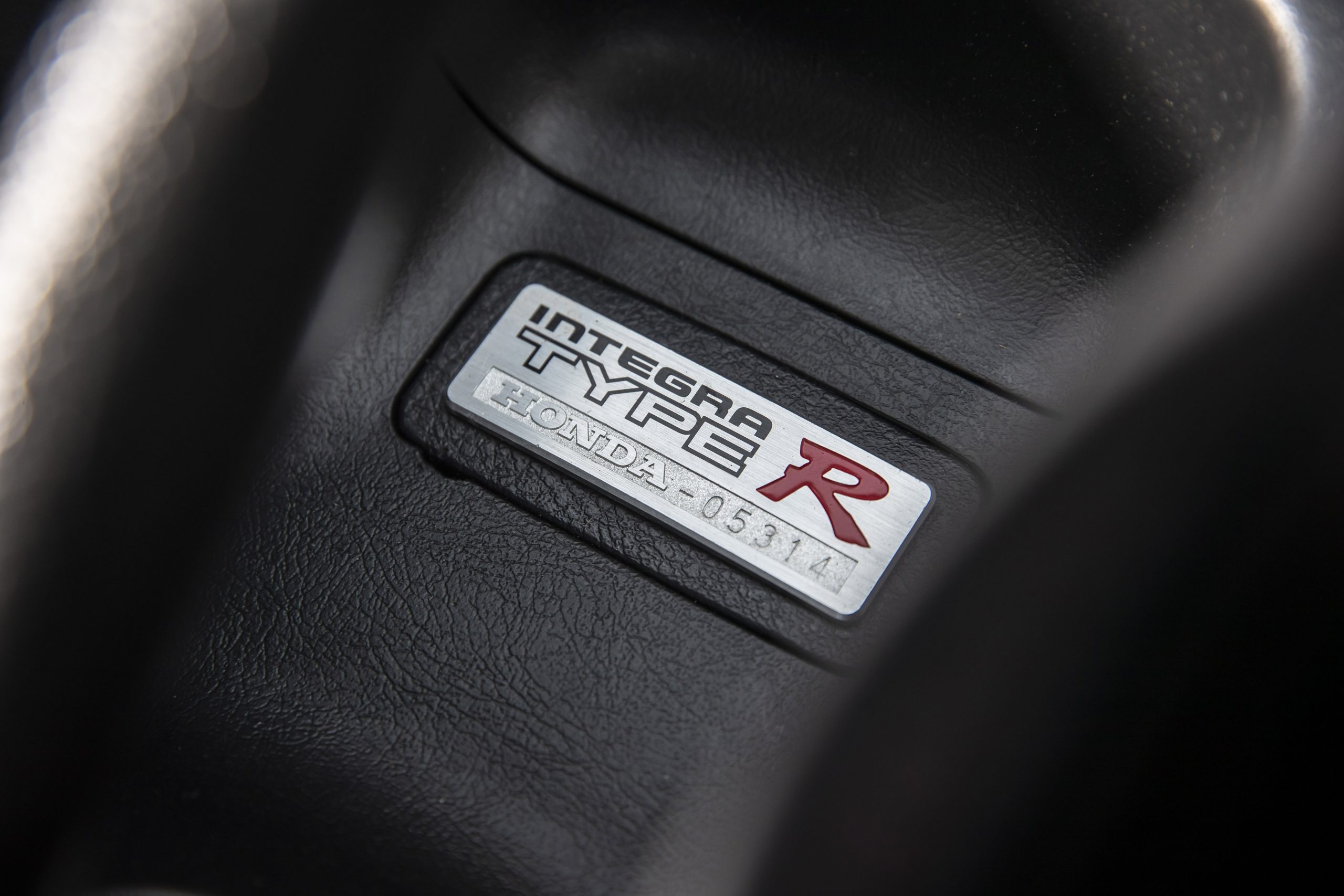
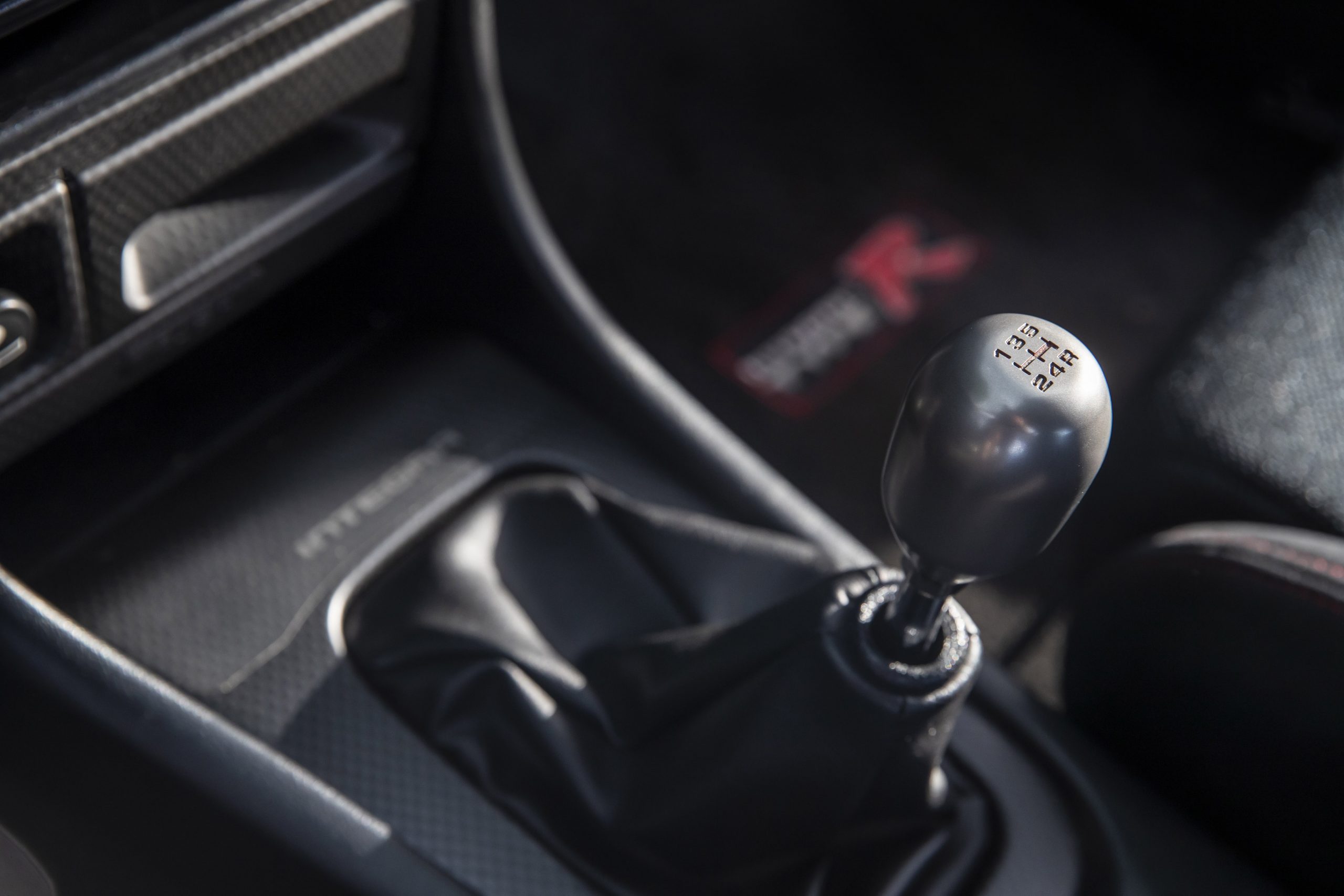
The engine settles to a hurried idle from cold, with just a little resonance coming from down below. That’ll be a vibrating heat shield for the exhaust, a common complaint from new. The clutch is typically Honda-light, the throttle surprisingly serious and oh-so sharp in its response. Tyres and suspension roll over lumps and potholes with a solid thump and no give in the car’s structure. The steering is assisted but you’ll only fully appreciate it at a standstill turning from lock to lock; it’s got heft to it, yet another sign it’s not your average Honda.
As you wait 10 minutes for everything to warm through – there’s no oil temperature display – you know it’s noisy and you notice its short gearing, but otherwise the Integra Type-R gives little away. It’s cooperative, efficient and easy for anyone to drive.
Once you reach an open stretch of road, things change. The engine comes alive, kicking into action just before 6000rpm, its gnashing wail filling the cabin as the rev counter needle flicks faster around the dial. First and second are used up in a flash; dancing between third and fourth is a delight as you time upshifts to stay in the powerband; feeling the precision of the gearshift leaves you wondering why so few other car makers get it right.
Call me biased, but the urgent, high-revving four-cylinder is a highpoint in the evolution of the combustion engine, up there with any straight-six, flat-six, V8 or V12 you care to mention from any number of supposedly more prestigious brands.
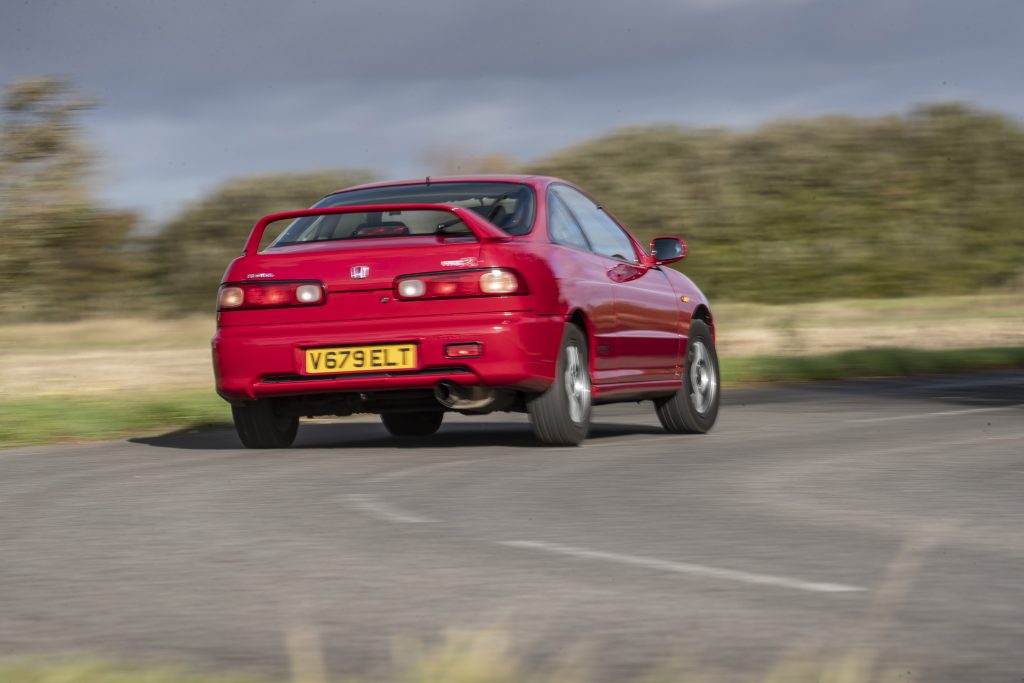
The more energy you release from that engine, the more you come to appreciate that no other part of the package is dragging its heels. Guiding the Integra is as instinctive as recovering your balance. Alter the position of the throttle, tap the brakes or tweak the steering and it changes direction with such enthusiasm that you have to resist the urge to open the bonnet and check the engine really is at the front.
Beyond initial lean on the tall-ish tyres and some body roll, which the Civic Type-R simply does not exhibit, there is a rare balance between the axles and ability to absorb mid-bend bumps. There’s also outstanding body control, and traction – so much traction – at any speed. The naturally-aspirated engine doesn’t overwhelm the front wheels with torque, and the harder you load the chassis the more the car comes back to you and seems to say, ‘Can we do that again – only, faster?’.
There is an intimacy to the driving experience that speaks volumes of how single-minded and self-obsessed the team behind this car must have been to push it through Honda’s approval process.
Those people, led by Shigeru Uehara, the chief engineer of the NSX and, later, the S2000, didn’t care that on any main road the Integra was trying as a tantruming toddler. They didn’t care that it came pitifully equipped and would have most passengers asking if they could get out after just a few miles.
They cared about one thing and one thing only: you, the driver.
Honda Civic Type-R
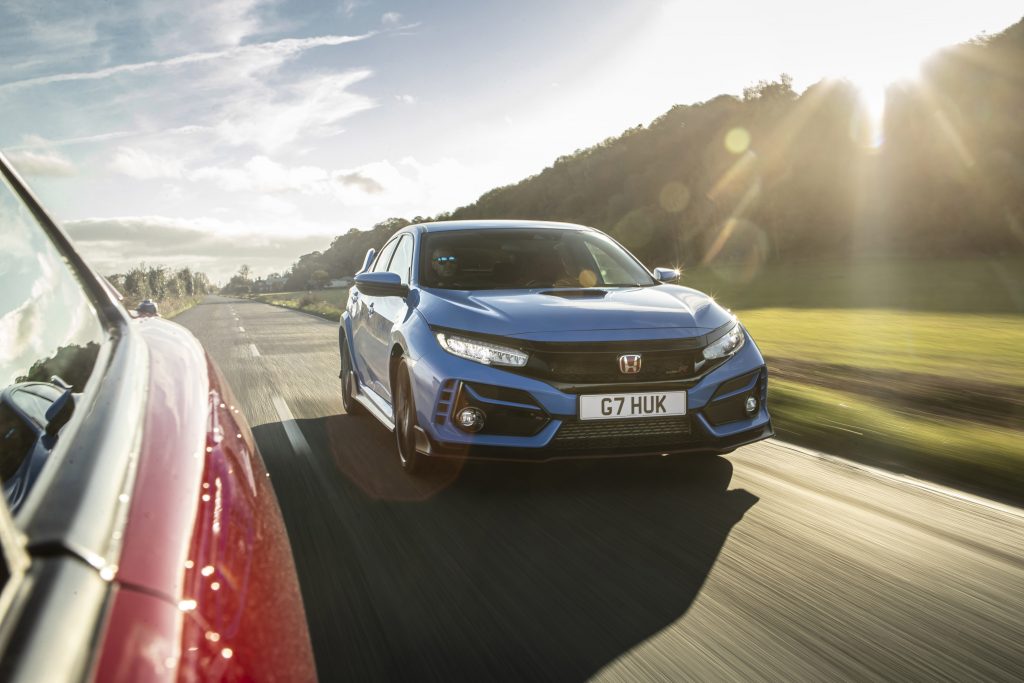
We all get that Honda, like every other car manufacturer in this day and age, has a lot to consider when researching and developing even a specialist product such as the Civic Type-R. But all the same, when you see the Civic alongside the Integra, the difference in size is a shock.
You see it everywhere – the size of the wheels, the scale of the brakes, the vastness of the rear wing, the headlamp clusters, length of the bonnet – on it goes. At this point you may be expecting us to take it to task for getting podgy but actually, not a bit of it. It’s a wonder that the Civic isn’t more than 255kg heavier than the Integra when you think about its size, how much safer it would be in an accident and how there are creature comforts such as dual-zone climate control and an (admittedly rubbish, bar the Apple CarPlay) infotainment system.
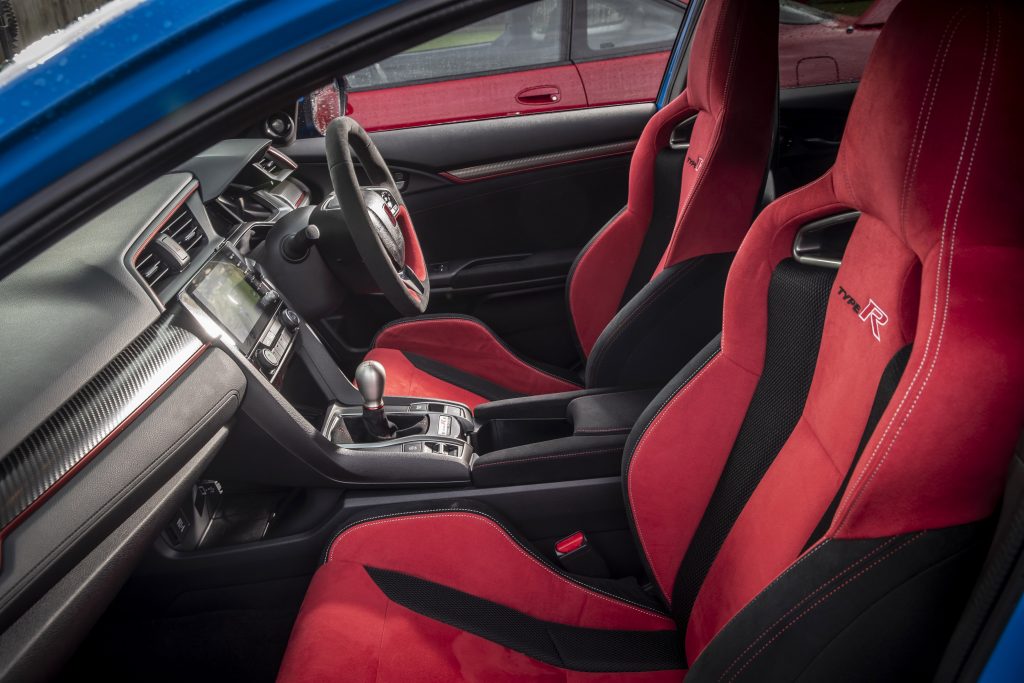
On the subject of scale, we can’t not talk about what many have commented is the Civic’s most divisive aspect, its bodykit. This is design at its very busiest, a cross between car and Transformer. You half expect it to unfold, stand up and fire a set of heat-seeking missiles at any competitor that dare approach it at a set of traffic lights. It’s amusing to those of us old enough to have been around when people used to scoff at the ‘ridiculous’ rear wing of the Integra when it was launched, and the Accord Type-R that would later follow.
Anyway, even though it’s bigger and heavier the Civic Type-R’s not gone soft. It has a 316bhp turbocharged VTEC engine that also brings a ton of torque to the party – a hefty 295Ib ft from just 2500rpm. The Integra can’t even summon half that, applying an apparently weedy 131Ib ft to the road at a mildly inconvenient 7300rpm, even if VTEC means it pulls with more enthusiasm than you’d imagine.
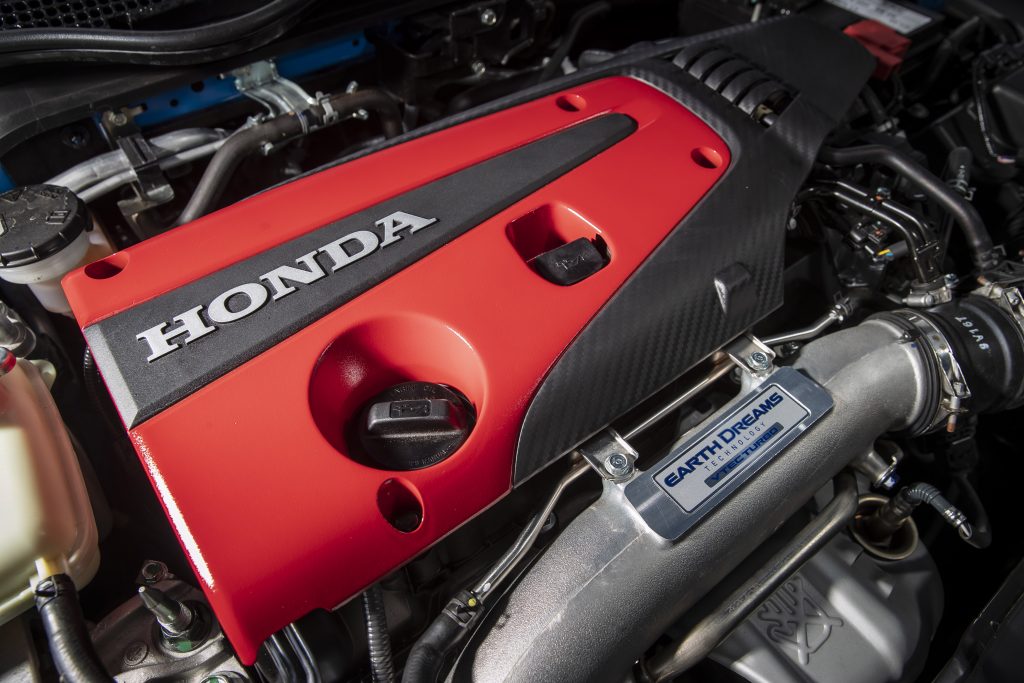
What this means is that on the road there is rarely a moment where the Civic driver will ever want for more performance. Like most modern hot hatchbacks, it’s phenomenally fast and phenomenally easy to drive fast. Plant your right foot and it just goes – and boy does it go. No lag, no waiting for VTEC to do its thing; just wham-bam-thankyou-ma’am and you’re rushing toward the next corner with the ease of playing Gran Turismo.
Numbers pass by in a blur on the speedo as the silky gearshift does its thing. The Civic Type-R is claimed to hit 62mph in 5.8 seconds, and the top speed is 170mph. Okay, strictly speaking it’s 169mph, but come on: downhill with the wind behind you, this is a 170mph Honda Civic.
That alone doesn’t make it a satisfying driver’s car. Needless to say, the level at which this car operates would have been the stuff of dreams in the mid ‘90s when the Integra hit the road. Its grip, both lateral and longitudinal, braking power and utterly unflustered stance when piling through corner after corner gives it the feel of a well-sorted racing car. Little, if anything, flusters the Civic Type-R.
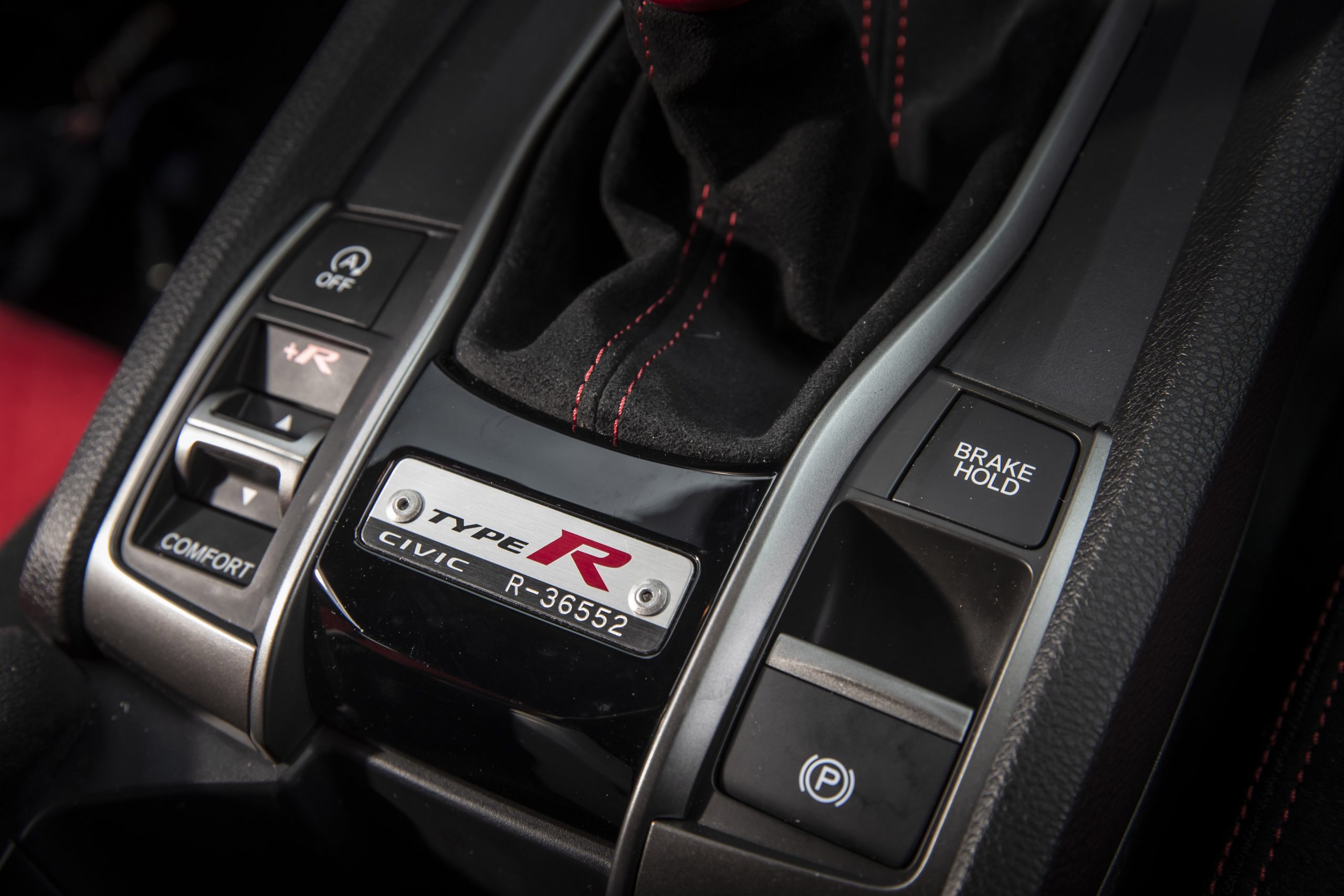
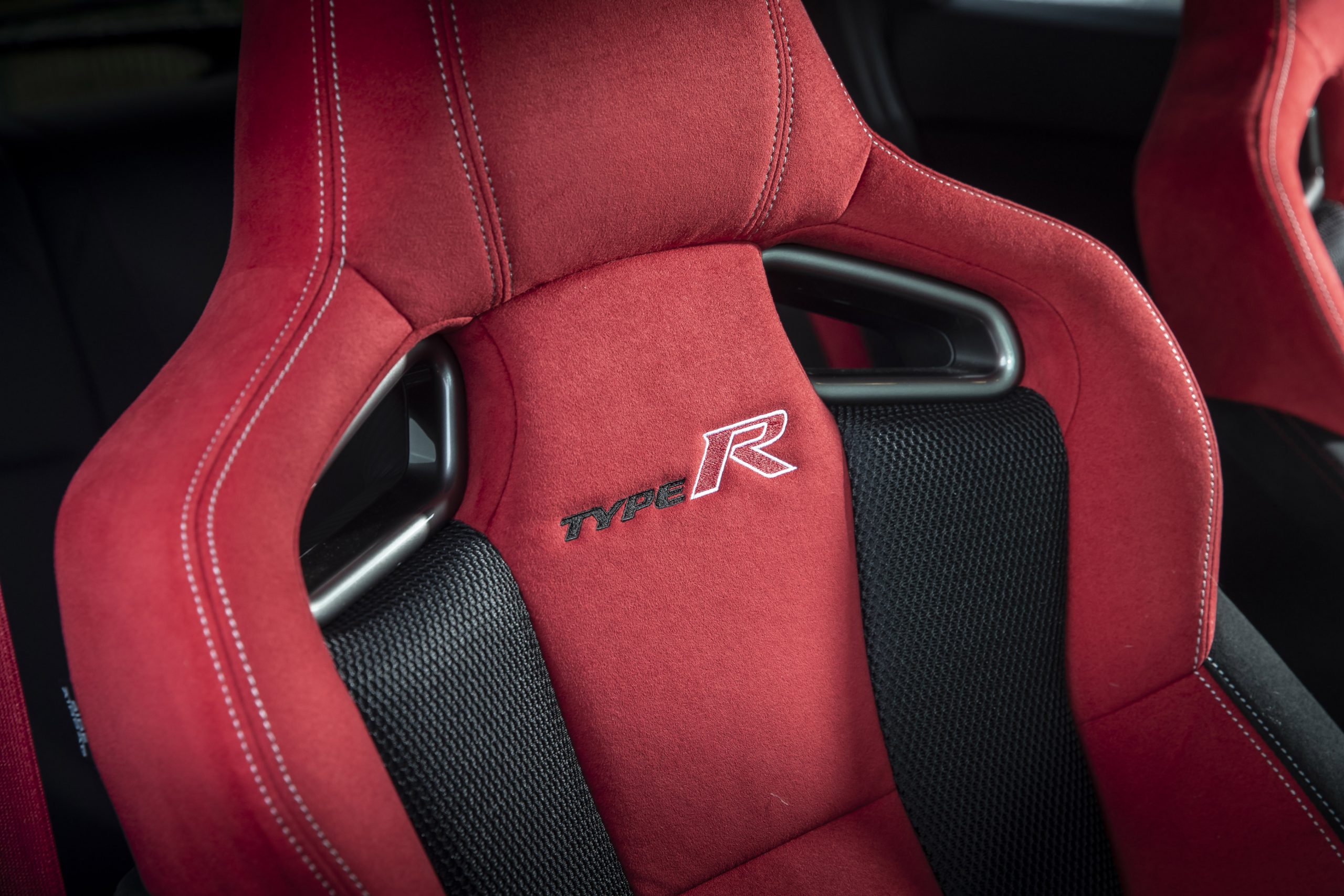
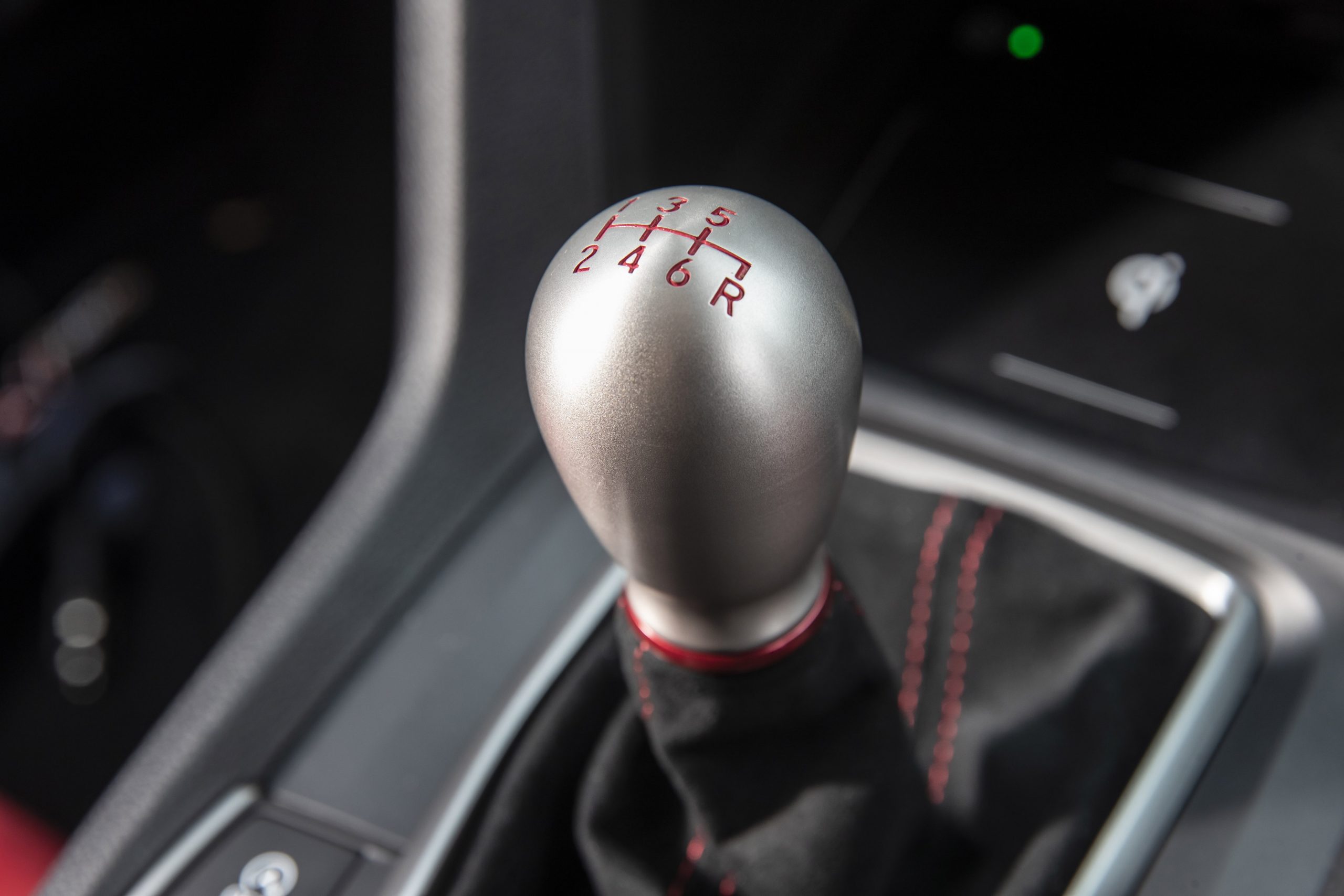
Yet as a driver, there is far less for you to do. Yes, you can pick from one of three settings for the adjustable dampers but the resolutely planted chassis has no intention of altering its trajectory on the way into a corner, or in the middle, as the Integra will. It’s probably for the best, given the cross-country speed that the Civic can summon. You sense rather than feel the car’s speed, as the engine note is distant and the behaviour of the tyres is equally muted through the steering and seats.
These aren’t necessarily criticisms, as the Civic isn’t alone in delivering a driving experience akin to turning on a PlayStation, as most modern performance cars feel this way. And on a race track, it will put in hot laps with the best of them. It’s just that, along the way, cars – like us – have had to grow up. Yet there are sometimes moments when you’d do almost anything to get back to those young, carefree days where tyres were skinny, throttles analogue, traction and stability control didn’t exist, and the driver was by far and away the determining factor in how a car acquitted itself on the open road.
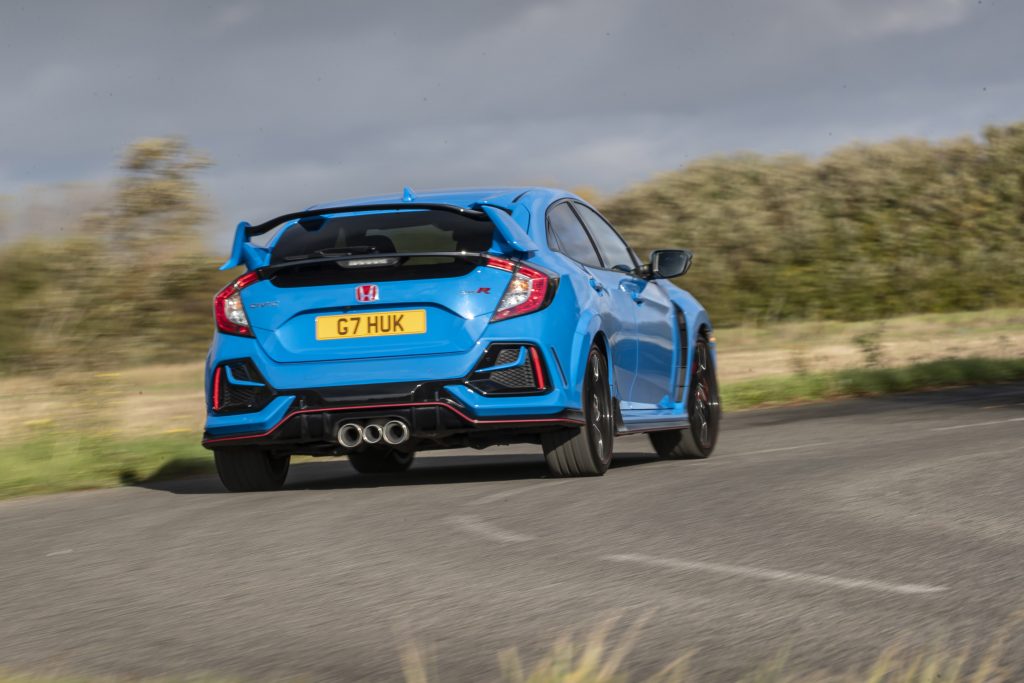
It’s interesting to note how you can exploit more of the Integra’s performance potential for more of the time, in part because you aren’t getting from one bend to the next as quickly, and in part because of its size. It is significantly smaller, so threads down roads with room to spare; the Civic eats up every inch of its side of the road. And because you’re sitting so low down in relation to the dashboard and waistline, that big-car feeling is only exaggerated.
None of us expect to go backward, but how much larger can hot hatchbacks and performance cars get? A new generation of Civic Type-R will be launched this summer (2022); will it grow further still?
As capable as the Civic is, it serves to illustrate that today’s performance cars are researched and developed by committee, with focus groups and benchmarking studies, cost-benefit analysis and tear-downs of competitor cars.
It’s a necessary evil, but equally it’s an approach that leaves no room for influential, unbending figures such as Shigeru Uehara. To truly appreciate the Type-R experience, you have to go back in time.
Fast facts: Honda Integra Type-R vs Honda Civic Type-R
Price: £19,500 vs £30,805
Engine: 1979cc, four-cyl, naturally aspirated v 1996cc, four-cyl turbo
Power: 187bhp @ 8000rpm vs 316bhp @ 6500rpm
Torque: 131Ib ft @ 7300rpm vs 295Ib ft @2500-4500rpm
Transmission: 5-spd man, LSD vs 6-spd man, LSD
Tyres: 195/55 R15 vs 245/30 R20
Kerbweight: 1125kg vs 1380kg
Length/width: 4380mm/1695mm vs 4557mm/1877mm
0-60mph: 6.7sec vs 5.8sec
Top speed: 145mph vs 169mph
Fuel economy: 32.1mpg (EC average) vs 33.2mpg
Read more:
Retro Rewind: Ford Fiesta RS Turbo vs Fiesta ST
Retro Rewind: Mazda MX-5 1.8i vs MX-5 R-Sport
Retro Rewind: Renault Megane R26R v Megane RS Trophy R






























In terms off HP per litre. 187 BHP from the 1.8 L Vtec back then was not the most from a naturaly assperated engine. But it may have been on the UK market. In Japan you had the 1.6L high revving cars producing up to 175 HP and naturally assperated. The limited edition Nissan Pulsar VZR N1 producing 201 HP and the (non N1) which was more common at 175 HP.
Mitsubishi Mirage (Colt) Mivec also 175 BHP.
Toyota Levin AE111 BZR again 175 BHP.
Honda Civic EK9 Type R at 182 HP.